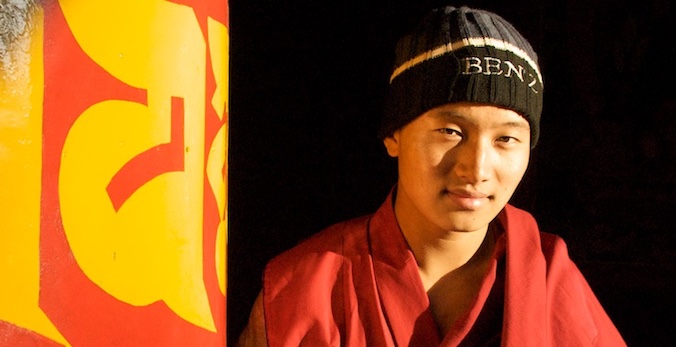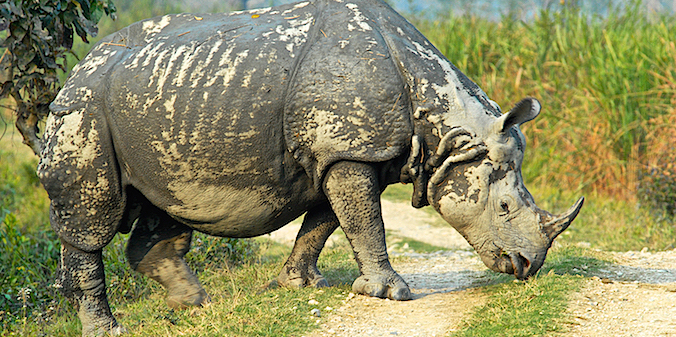CULTURE and WILDLIFE of NORTHEAST INDIA
Tour - 21 days
About Assam and Arunachal Pradesh
Assam is the only state in north-east India that is almost entirely low lying. It consists largely of the flood plains of the Brahmaputra, one of the largest untamed rivers in the world. The climate is ideal for rice cultivation, all kinds of tropical crops, bamboo cultivation and fish farming.
Assam is relatively densely populated. The legal part of the population consists of at least 35 million people on an area of 78,000 square kilometers (similar to Czechia, a bit smaller than Austria), the illegal part at least 5 million.
Read more…Read lessThe name Assam comes from the same origin as Siam, which means Thailand. The larger part of the population finds its roots far to the east, from where their ancestors, the Ahums, entered the area in the 13th century. For more than 600 years, the Ahums upheld a kingdom in Assam. However,especially in the last two centuries, the Assamese culture, language and genetics have changed due to immigration from India, Nepal and later Bangladesh.
Before the Ahums settled in the Brahmaputra Plain, other peoples already lived here. The most important of these are the Bodos, who now live mainly in the north and northwest of Assam (population about 1.5 million).
Arunachal Pradesh is by far the most mountainous and most forested state of Northeast India. It is sandwiched between Bhutan in the west and Myanmar in the east and shares its entire northern border with Tibet/China. This border is formed by the highest glacier-covered peaks of the eastern Himalayas, a very difficult area to reach.
At lower altitudes, between 1000 and 3000m, the state is endowed with dense temperate forest and the most extensive subtropical jungle of India. Here, the majority of Arunachal’s diverse population lives, divided over many different ethnic groups.
Read more…Read less
There are at least 26 different tribes, depending on who is counting. Each of these tribes has its own language, culture, form of agriculture, religion, costumes and customs. Most of them are originally hunter-gatherers who live off what the forest yields. Donyi-Polo, the Sun-Moon god, is more popular here than Shiva, Mohammed, Jesus or Buddha. The exact origin of these tribes is largely unknown, but customs, language and looks point to East Asia and border areas of Tibet.
BUDDHIST ENCLAVESArunachal also has pockets of Buddhism. In the far east of the states, there are some villages where one could imagine being in Myanmar or Thailand, as the same Hinayana (Theravada) form of Buddhism is followed here. Mahayana (‘Tibetan’) Buddhism is followed by the Memba of Mechuka (north of Along) and is especially predominant in the northwestern corner of the state, where Arunachal borders both Tibet/China and Bhutan. Here, the Sherdukphen and Monpa live. Their language and culture are very reminiscent of their neighbors across the border. Tawang, the main town in this area, is said to have the largest ‘Tibetan’ Buddhist monastery outside Tibet.
To reach this area, involves 2.5 days of driving from Guwahati, whereby one crosses the 4170m high Sela Pass. The latter is done on the tour described here.
Region
Assam & Arunachal Pradesh
(India)
Best Time
March/April &
Nov/Dec
No. Of Days
21 days
Trip Character
Jeep tour
Sleeping Altitude
65 - 3000 m
Price
INR XXX/ $ XXX
ABOUT THIS TOUR
On this tour, you explore the two largest states of Northeast India, its wildlife, tea estates and mountain tribes. It starts at Dibrugarh, India’s easternmost city. Here, we stay two days at a very atmospheric nineteenth century bungalow amidst tea plantations.
After visiting the interesting Ahum monuments at Sibsagar, remnants of a 600-year kingdom of Assam, we cross the Brahmaputra to Majuli Island. Here, we walk and bicycle through traditional villages of the Mishmi tribe and witness a unique esoteric dance performed by a community of Vaishnavite (Hindu) monks.
Traveling north into the forest-covered mountains of Arunachal Pradesh, we’ll see the different cultures of the Adi Gallong and Mishmi, Tagin and Apatani, just to name a few. These people live in large bamboo houses on stilts and are still largely self-sufficient. The small hamlets surrounded by fields and forest are quite an idyllic sight, exuding an atmosphere of nature-based prosperity.
Read more…Read less
After traversing Arunachal Pradesh from east to west, you’ll spend two days at Nameri National Park. You’ll explore this beautiful conservation area on foot, and if you like by raft. Traveling north again you’ll visit Bomdilla and Tawang, situated at an elevation of 3000m at the point where Bhutan, Tibet and India meet. Tawang is home to the largest lamaist (’Tibetan’) Buddhist monastery outside Tibet. This is the home of the Monpa tribe, people of Tibetan descent.
Lastly, after coming down to the plains again, you’ll visit Kaziranga National Park, one of the crown jewels of Indian conservation. It is home to to the largest remaining population of Indian rhinos, as well as large herds of wild elephants, wild buffalos, more than hundred tigers and an incredible birdlife.
YOUR custom-made TRIP
The tour described here, as well as the other ones on our website, are mainly meant as suggestions. We would be happy to offer you a travel proposal that fully meets your personal demands and expectations. That means that you choose where you want to go, what level of accommodation and type of transport you want and what activities you prefer.
Please let yourself be inspired by this and other trips on our website and then drop us a line (or call us) to explain your travel wishes. We will be happy to help you put together the perfect trip. You can reach us over e-mail, Messenger, Whatsapp or mobile phone.
EXTENSIONS & VARIATIONS
Apart from the tour as described here, you could consider the following add-ons and changes:
- Spend a few days at a tea estate in Tezpur, to fully unwind and relax before you start on the trek.
- If you’re interested in wildlife, consider adding a few days at Kaziranga National Park, home to a large population of Indian rhinos, wild buffalos, wil elephants, deer and almost 500 species of birds. It is only 4.5 hours drive from Guwahati and 3.5 hours drive from Tezpur/Nameri.
ITINERARY
-
Day 1: Delhi / Kolkata ✈︎ Dibrugarh
At Dibrugarh airport you’ll be greeted by our staff and then transferred to an extremely atmospheric former tea bungalow. Once, this was the home of the tea estate manager, now it is a luxurious hotel. This 19th century wooden structure was built on stilts to give protection against wildlife. Afternoon walk through the tea gardens around the lodge. Altitude 110m. -
Day 2: In Dibrugarh
A relaxed day. You can see how tea picking works and/or take a walk on the beach of the majestic Brahmaputra. Or you can visit a small Thai Buddhist village (2 hours driving). The local monks and laymen preserve their original culture very well. Altitude 110m. -
Day 3: Dibrugarh - Majuli Island (3.5 h)
Our first stop is at the famous 16th century Ahum monuments of Sibsagar and at the largest Shiva temple of India. Believers go in and out of the temple, which is a fascinating sight in its own. By ferry we cross the Brahmaputra to quiet Majuli, one of the largest river islands in the world. Overnight is in simple but rustic and clean cottages. Altitude 65m. -
Day 4: On Majuli Island
Majuli is a paradise for water birds, but it is best known for its Satras. These are kibbutz-like monasteries where Hindu monks who belong to Vaishnavism live. We will witness monks performing dances, which have acquired UNESCO World Heritage status. Options in the afternoon are: visit of mask factory or the museum of another Satra. Or you can go for a very enjoyable bicycle trip, riding over small dikes and passing through many small Mishing villages. Altitude 65m. -
Day 5: Majuli – Along (8h)
We drive north for 50 km and then turn east at the town of North Lakhimpur and continue on to Silapathar, a small, bust town near the Arunachal Pradesh border. Here the special Potected Area Permist for Arunachal Pradesh are checked. Then you drive up through over a narrow, winding road up between wooded mountains and past idyllic villages of bamboo houses, to Along. Altitude 85 -> 620m. -
Day 6: In Along
Short ride to the picturesque village of Kabu. After visiting the village we cross the river and do a wonderful hike of about 13 km to Paya village. Pick up by car and return to hotel. Altitude 620m. -
Day 7: Along - Daporijo (6 h)
Today you’ll enjoy one of the most beautiful routes in Arunachal Pradesh. The road leads through a great variety of forested mountains speckled with traditional villages with houses made entirely of bamboo and rattan. You’ll visit one or more villages inhabited by the Tagin tribe. The Tagin are usually followers of Donyi Polo, the god of the moon and the sun, who is worshipped by most animistic tribes of Arunachal. Altitude 620 → 600mm. -
Day 8: In Daporijo
The day will be spent on walks through a beautiful archaic landscape with forests, bamboo groves, meadows and small Tagin villages, and in the afternoon a visit to a local market. Altitude 600m. -
Day 9: Daporijo - Ziro (7 h)
Todays route, again, passes through small traditional villages against the backdrop of densely wooded mountains. Tagins and Nyisi live here. The Nyishi are the largest tribe in Arunachal Pradesh. Polygamy is common among them. In the evening you can visit the local marke tat Ziro. Here, at 1700 m, it can be surprisingly cold at night. Altitude 600 → 1690m. -
Day 10: In Ziro
The pictureasque valley of Ziro is one of the most traditional areas in Arunachal Pradesh and home to the Apatani tribe. The older Apatani men tie their hair in a roll and tattoo their faces. The older Apatani women wear wooden nose plugs and face tattoos. However, the younger generations of Apatani have stopped this practice. Altitude 1690m. -
Day 11: Ziro - Nameri N.P.
Today’s drive is a long one. First, we descend to the plains of Assam, then pass the tea town of Tezpur, and then head up again into the foothills of the Himalayas. Overnight is in a tented accommodation with beds and own shower, directly outside beautiful Nameri National Park. Altitude 1690 → 100m. -
Day 12: In Nameri
In the morning we hike along the northern shore of the Borelli River to a small lake where we hopefully can observe the very rare White-winged Wood Duck. In the afternoon we make another tour, deeper into the park, which may brings us up-close with wild elephants. Altitude 100m. -
Day 13: Nameri - Dirang (6-7 h)
We continue north and that means into the Himalayas. The landscape changes dramatically again. Overnight is near the small town of Dirang. Altitude 100 → 1560m -
Day 14: Dirang - Tawang (7 h)
Another long trip brings us to Tawang at 3000 m. Half way we cross the 4140 m high Sela Pass. After the pass you enter a region with its own landscape and culture. The region is inhabited by the Sherdukphen and Monpa, both groups of Tibetan origin. Altitude 1560 → 3000m. -
Day 15 & 16: In Tawang
Two days will be spent exploring Tawang and its surroundings. Beside the monastery there are several smaller gompa's in the area. We can also visit the Stupa of Gorsam and Urgelling, the birthplace of the 6th Dalai Lama, as well as the border area where the present Dalai Lama entered India after fleeing Tibet in 1959. Altitude 3000m. -
Day 17: Tawang - Bomdila (6 - 7 h)
Today you drive south to Bomdilla. On the way you will be crossing the Sela Pass, at 4170 m the highest motorable pass in the Northeast. At Bomdila you can do an evening visit to Bomdilla town and its Buddhist monasteries. Altitude 3000 → 4170 → 2415m. -
Day 18: Bomdilla - Nameri N.P. (4 - 5 h)
Going further south you’ll reach the foothills of the Himalayas near Tezpur. Here you’ll veer east onto a small road that leads to Namri National park. Altitude 2415 → 100m. -
Day 19: Nameri - Kaziranga (3.5 h)
We descend to the Brahmaputra and cross it by a long bridge. On the other side is famous Kaziranga, where we check in for 3 nights at an attractive resort very near the park. Altitude 100 → 65m. -
Day 20: In Kaziranga N.P.
Again you’ll do two jeep rides, each in different parts of the park. The park has seven different ranges, each with its own landscape and different chances of seeing particular species. Altitude 95m. -
Day 21: Kaziranga - Guwahati & flight Guwahati ✈︎ Delhi (5 h drive, 2 h flight)
Early morning you leave for Guwahati, the capital of Assam. Here, you take the afternoon flight back to Delhi. It depends on the timing of your international flight whether you will need an overnight stay in Delhi. In the latter case we can arrange this for you.
HIGHLIGHTS OF THIS TOUR
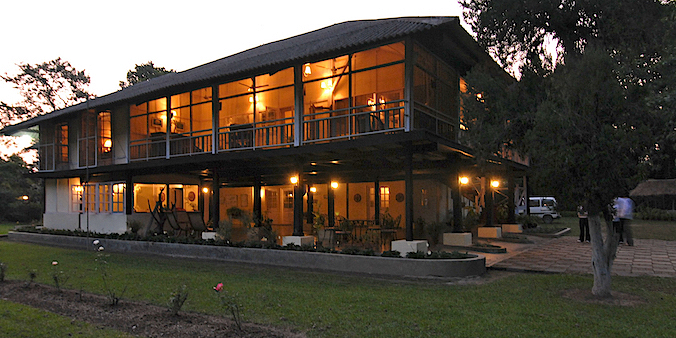
ANCIENT TEA BUNGALOWS
Tea Gardens of Assam
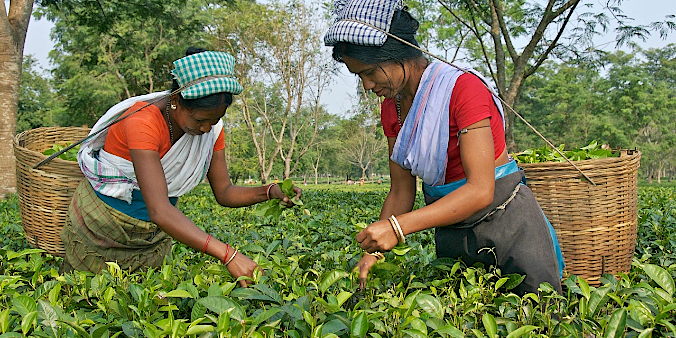
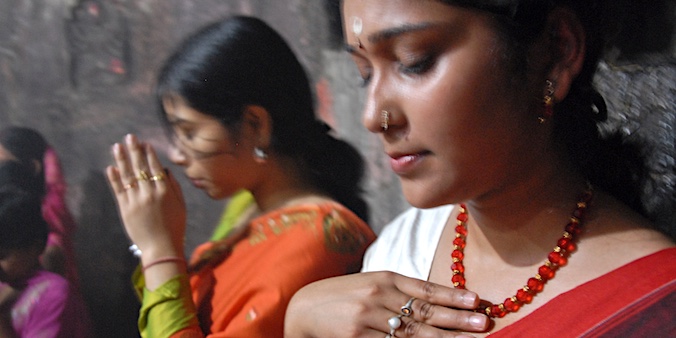
Sibsagar
Brahmaputra CROSSING
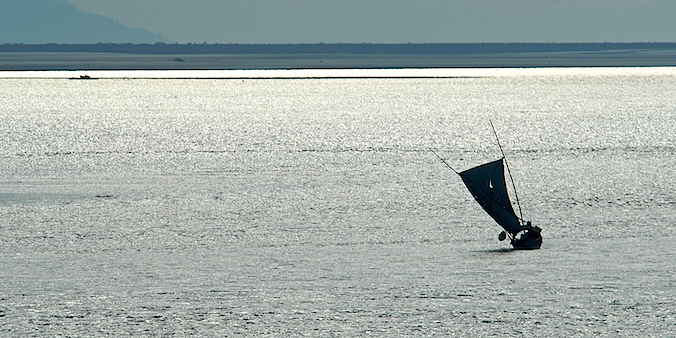
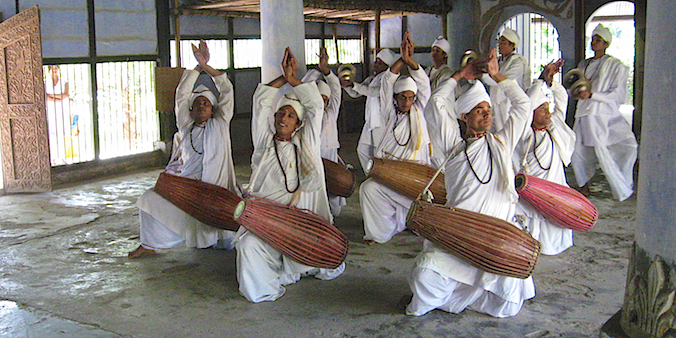
Satras of Majuli island
The Adis of Eastern Arunachal

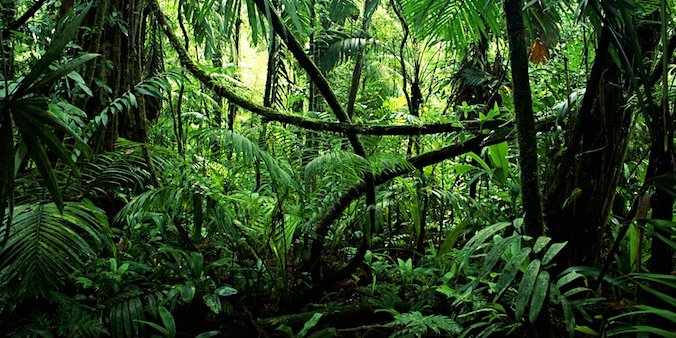
The Jungle of Arunachal Pradesh
The Tagin of Central Arunachal
The Tagin are one of the major tribes of Arunachal Pradesh, and speak a Tibeto-Burmese dialect. One concentration of Tagins is found around the town of Daporijo (600m). The Tagins practice shifting slash-and-burn cultivation, with rice, maize and millet as main crops, complemented by fishing, hunting, and gathering. Monogamy is the general rule, but polygamy is also widely practiced. The Tagins used to be followers of Donyi Polo, the worship of Sun and Moon, which includes many shamanistic practices. In the 18th century some Tagins came under the influence of Tibetan Buddhism. Recent decades have seen mass conversions into Christianity. Tagin live in stilted bamboo dwellings with verandas, which are accessible by a notched wooden ladder.
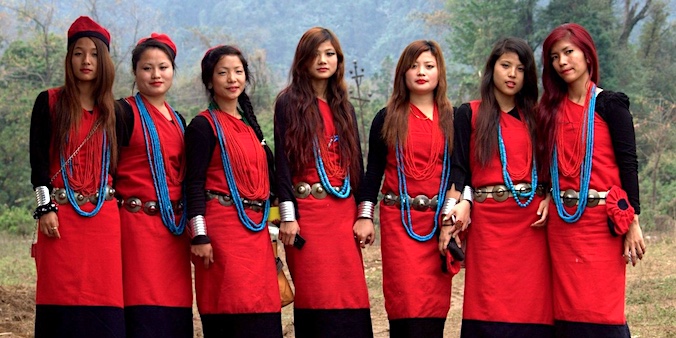

The Mithun
When traveling in Arunachal Pradesh sooner or later you will see a strange kind of ‘cow’ by the side of the road. This is the mithun or gayal, a cross-breed between domesticated buffalo and wild gaur. The latter is a large and exceptionally muscular wild bovine that roams the last undisturbed forests of India. The gaur is a browser, adapted to foraging in the forest and eating leaves. Crossing the wild, hard to domesticate gaur with the easier to handle buffalos – that require grass, which is less available in forested areas – made a lot of sense for the forest-dwelling Idu. As the mithuns are mainly kept for meat, they can roam freely in the forest till it is time to face the music. The latter happens mainly in the form of sacrificing to the gods at one of the many festive occasions, such as religious festivals, marriages and funerals.
The Nyishi of Central Arunachal
The Nyishi, with a population of around 300.000, are the most numerous tribe of Arunachal Pradesh. Their language belongs to the Sino-Tibetan family. The Nyishi are agriculturalists using a form of shifting cultivation. The main crops are rice, maize and millet. In the past the Nyishi used a barter system and they still greatly value reciprocity. Polygamy. although now diminishing, used to be prevalent. It signifies one’s social status and economical stability and also proved handy during clan wars. Many Nyishis have been converted to Christianity by missionaries in the 1970s. Some still adhere to Donyi Polo, worshipping the Sun and Moon. This institutionalized indigenous religion was developed at the same time to counter the inroads of Christianity. It is based on the ancient animistic beliefs of the Tibeto-Birmese peoples of Arunachal Pradesh.
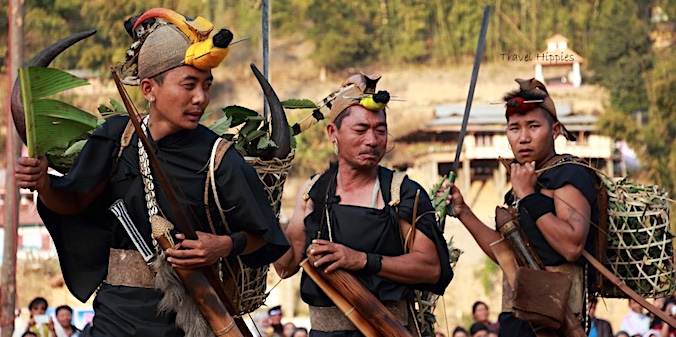
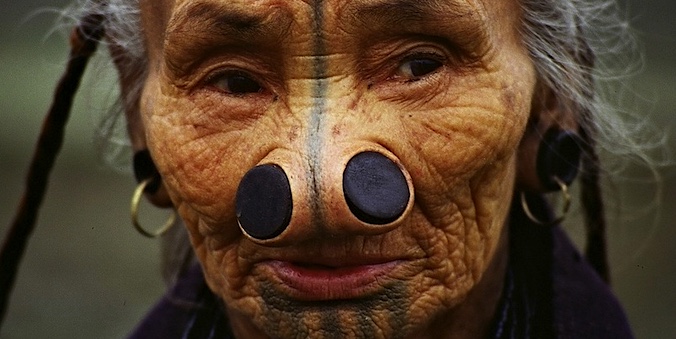
The Apatani of Ziro
Nameri National park
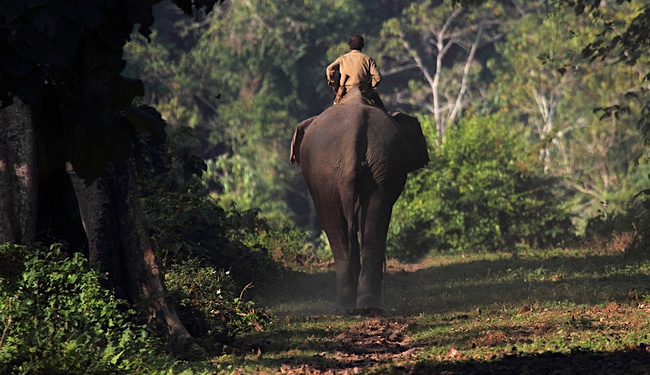
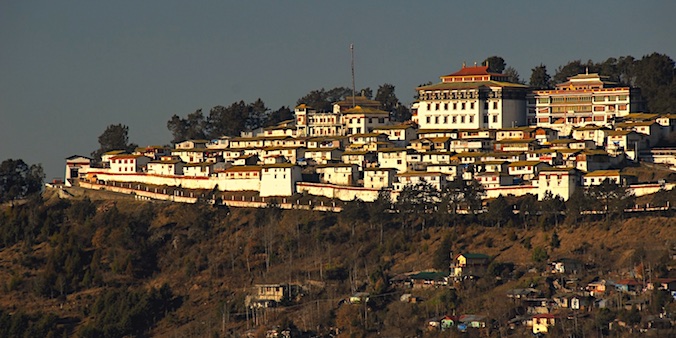
Tawang
The Monpa people of Tawang
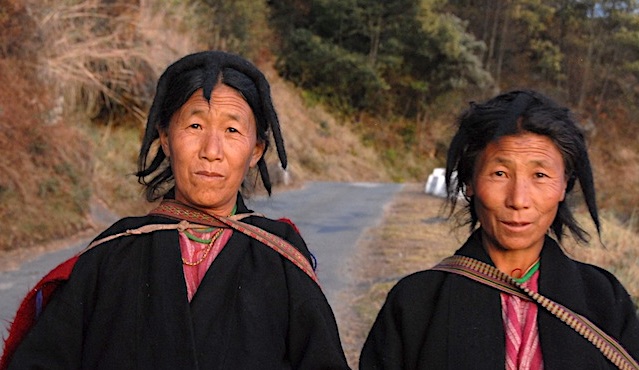
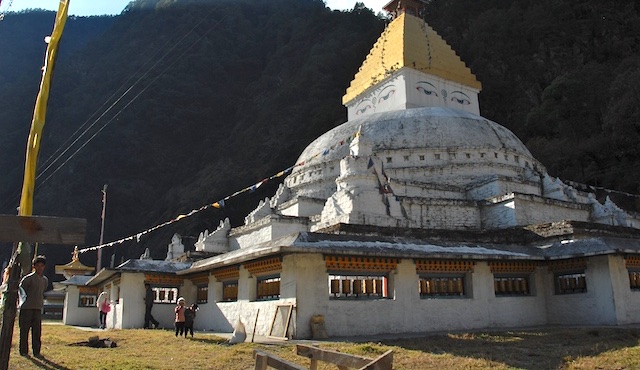
Surroundings of Tawang
Bomdila
Bomdila at 2415m is a small hillside town, surrounded by apple orchards and orchid farms, and a pleasant stop between Tawang and Tezpur. Just as in Tawang Monpa is the dominant tribe. The large Buddhist monastery Gaden Rabgye Ling, located above the town, dominates the townscape. Other interesting places to visit are the market, the Buddha Park and the Guru Rinpoche statue. From the Bomdila helipad one can enjoy nice views of the whole town.
